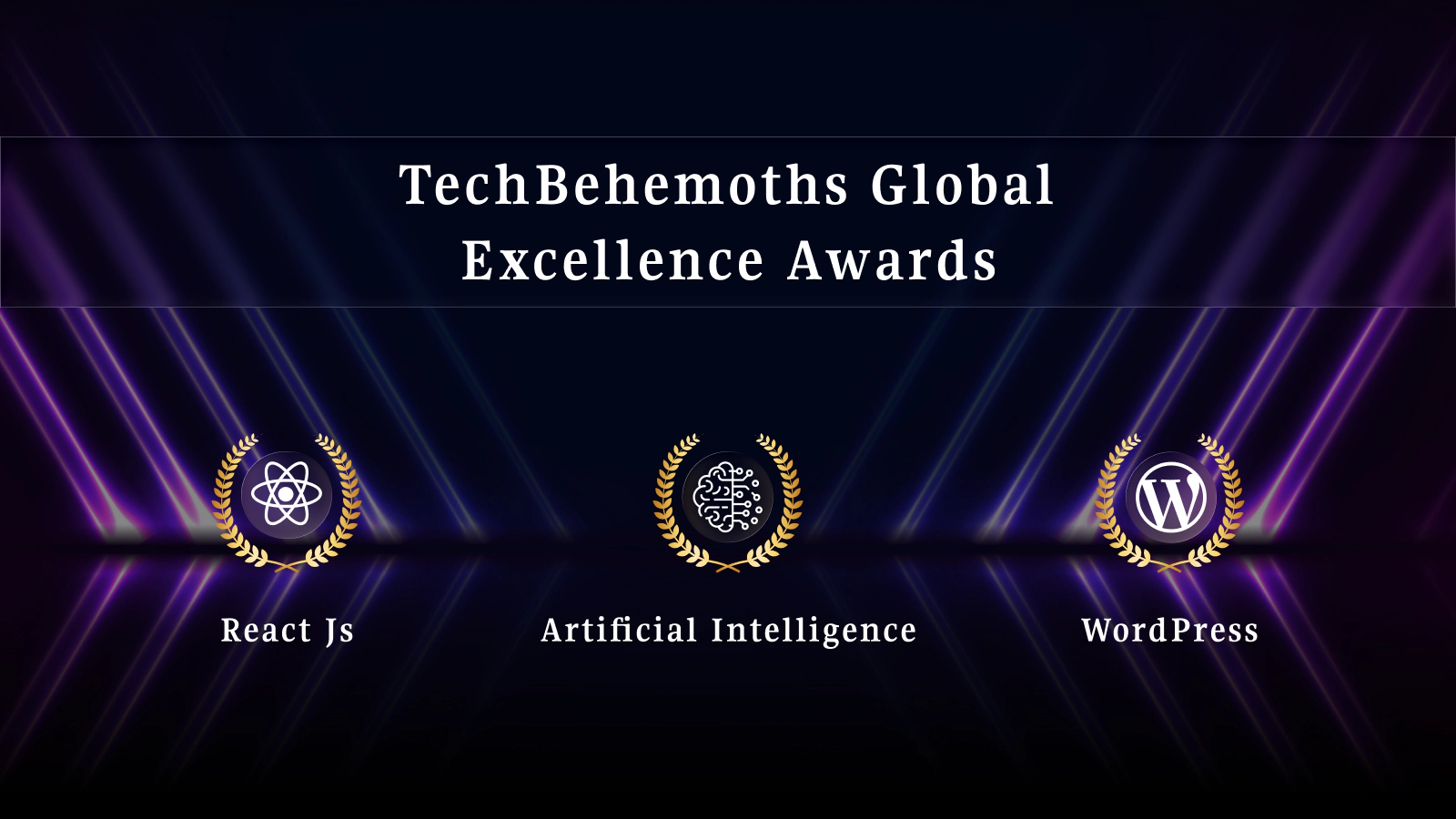Best Programming Languages For Developers
Today, advanced transformation have entered almost every industry and that’s the why the businesses opt for web development.
There are a number of most popular programming languages are there in the market and you should choose among that as per the requirements.
Technologies are enabled through programming languages, and there are more than 600 programming languages in the technology space. The command and recognition of programming languages swing every year. Also, new programming languages are coming with eye-catching features and functionalities.
About GitHub and why we are mentioning it here
GitHub is one of the best platforms for sharing code to different stakeholders. To make sure you do this without any stoppage, GitHub offers numerous features and wikis for all categories of technology projects. It backs an entire community where 83+ million professionals discover, share, and work mutually to develop software through different programming languages.
There are vast number of professionals work on GitHub to create remarkable projects jointly across 200+ million repositories. (Source:- Wikipedia)
GitHub has made things simpler for programmers and programming teams can now write swifter and enhanced code using features accessed through GitHub.
Here are the most popular programming languages of 2025 as per GitHub. Python, Java, C++ and Go programming are the top on the list.
We have researched on a diverse range of development forums, discussed with programming specialists, and reviewed Github communities to explore this list.
The Best Programming Languages to Learn
These are highly used and the most popular programming languages in 2025. For each, there is required information about the language, advantages, complexities, and usages.
1. Python
One of the most popular web programming languages, Python, continues to be amongst the best contributors in the development world.Python, as an inclusive language, can be used in many diverse categories of projects, including but not restricted to building APIs, desktop applications, crawlers, scrapers, backend systems, and much more.Python is integrated-up into the latest technologies, including machine learning and data analytics, blended with top-rated plugins and 3rd party libraries. Libraries such as SciPY and Panda are highly prevalent in the industry.It is this accessibility of sound 3rd party libraries that make Python one of the most popular programming languages currently.
Advantages
- It can come in use for nearly every sort of open source project.
- Because of its straightforward syntax, extensive library of standards and toolkits, and interoperability with other well-known programming languages like C and C++, Python is regarded as a programming language that is simple to learn.
- Frameworks and libraries are extensive and serve a wide range of applications.
- It is applicable for Java and C counterparts such as CPython and Jython.
Disadvantages
- Not entirely suitable for managing projects that need low-level manipulation of solutions and systems.
- Python requires a lot of memory to be user-friendly, which can be an issue if you’re trying to create programs that need to be memory-efficient.
- A drawback of this language is that it consumes a lot of memory, which is problematic for creating apps that prioritize memory optimization. As a result, Python is typically used for server-side development rather than client-side or mobile application development.
- Python is not an upright selection for building mobile applications.
Read More: Top Python Libraries You Should Know About
2. Java
Java is still applicable to the community like it was years ago. It has retained its position as the most popular programming language and utilized for many good reasons. The JVM (Java Virtual Machine) paradigm used in Java ensures development projects to run virtually on any system. It is high on scalability functionalities as compared to other far-reaching applications. With one of the biggest developer community, Java is unquestionably going to keep hold of its position as one of the best programming languages for time to come. The technology industry always pays additional attention to Java programmers. So, developing an innovative open-source application using it will bring you in the face of the limelight. That is why developers and clients choose Java for building their subsequent projects.
Advantages
- Effortless to access the essential components like file systems, design elements, graphics, and advanced programs that can run on various operating systems.
- Large enterprises worldwide employ client-server applications, and Java is the programming language most often associated with their creation.
- Even though Java is designed to be a loosely coupled programming language, applications written in it can run on any platform that supports them.
- As a result, Java is referred to as the “write once, run anywhere” programming language.
Disadvantages
- Involve new vocabularies to discover and so requires an investment of more time or effort.
- Contrary to server-based applications, Java is not the best choice for cloud-based apps (which is common for business applications).
- Additionally, a licensing price is associated with using the Java Development Kit, owned by the software giant Oracle.
3. C++
This programming language leads the way of the modern world’s most utilized programming languages. C++ is not going to be out of work in decades to come. Each complicated system that initiates from the operating system to government mainframes uses C++ in diverse forms. Amongst the leading organizations, even Google uses this programming language to enable it is most resource exhaustive operations. As C++ gives programmers access to very low-level system elements out of the box, it is used at the length of embedded systems commonly found around us. As advancements in embedded systems such as IoT devices and smartwatches are increasing, C++ is more and more used in different development projects. If you are a developer in this industry, only C++ can assist you in your most probable breakthrough. Besides, if you are involved in developing complex open source systems that solve current-day issues, you won’t get anything that provides a superior outcome than C++. And it is even the most popular programming language for a career.
Advantages
- It allows the developer with more and superior control as matched to the other languages.
- The portability of the platform independence functionality of C++ makes it straightforward for user base to operate the similar app on multiple OS’s or UI’s.
- Many people in the community appreciate Memory Management.
Disadvantages
- It is a little trickier to learn, explore, and become prolific with it than other languages.
- Because C++ is an object-oriented programming language, it has many security flaws, making it less secure than other programming languages.
- The amount of memory required by the pointers used in C++ makes it unsuitable for some devices.
4. Go Programming Language
One of the newest programming languages to gain speedy growth, Go is capable of handling some of the toughest computational issues with a comparatively smart approach. Go blends all the advantages of C. It is a static typed, assembled language, and has advanced features like garbage collection, structural typing, as well as CSP-style concurrency. The language is natural to learn even for fresh programmers while being exceedingly prevailing at the same time. Many most up-to-date open-sources, successful projects have embraced Go programming language for the handiness it provides without missing on needed features. From its present standpoint, Go seems to be the language that will empower most potential development solutions.
Advantages
- It is compelling with a supportive new community for your advanced projects.
- It’s a comparatively latest language with few resources, including libraries.
- Its underlying contradictions make its simplicity appear flimsy.
Disadvantages
- Less flexible, lack useful 3rd party modules, and is short of reusability.
- Lack of performance argument overloading and default values.
- Absence of generics.
Read More: Best JavaScript Frameworks For Robust Web Development
5. JavaScript
It should not come as a revelation when you view JavaScript as one of the most used programming languages. All this is because of its constant integrations into the newest open-source projects, and JavaScript has gained enormous growth and maturity. There is more than one steering factor behind this hottest trend of using JavaScript in diverse open source projects. With the successful introduction of the infamous Node JS runtime, programmers can facilitate this language in the backend and frontend of the various projects. Additionally, more than 94.9% of all web projects today utilize JavaScript, and it is one of the top programming languages for developers. So, it opens up innovations on an everyday basis to build something amazing. Because of these reasons, most developers are accepting JavaScript, once seen as an out of work programming language for new open-source contributions. With a boost in the momentum of receiving JavaScript, it is today considered as one of the most popular programming languages in 2025.
Advantages
- Quickness, straightforwardness, interoperability, new features as well as extensive functionalities.
- Because interpreters run the ASCII text file of programs directly, JavaScript is quicker than Java.
- JavaScript is compatible with features like dynamic typing and more compact executable programs.
- Programmers can use JavaScript to create web content on the server before a page is transmitted to the browser when paired with Node.js. This allows them to create games and communication programs directly in the browser.
Disadvantages
- There were some problems with security measures, client-side scripts, and support interpretations. However, most of these issues are covered-up as of now.
- The biggest issue or drawback with JavaScript is that anyone may examine the code because it’s always visible.
- No matter how quickly JavaScript is interpreted, JavaScript’s DOM (Document Object Model) is usually sluggish and incapable of producing HTML quickly.
- Internet browsers can prevent the execution of JavaScript code since this language is often used to create pop-up adverts that may occasionally contain harmful malware.
6. TypeScript
It is designed and sustained by Microsoft. It is fundamentally a superset of JavaScript with the extra aptitude for static typing. TypeScript is dimmed fitting to almost each large-scale web application and can also assist in building desktop applications, supported by cross-platform frameworks like Electron. If you are exploring developing the subsequent generation of web applications and finding JavaScript to be too confusing, you can opt TypeScript for your current projects. TypeScript trims down redundancies related to JavaScript, without any concession with any of its features and functionalities. So, it’s the best programming language to build advanced open-source projects that use multiple web components.
Advantages
- It comes with tooling support and optional static typing. And can compile down to a version of JavaScript that operates on all browsers.
- Some advantages of TypeScript are provided via type inference without actually utilizing them.
- Access to ES6 and ES7 capabilities before major browsers start supporting them.
- A JavaScript version that can be compiled to run on all browsers.
Disadvantages
- It takes more time to compile the code compared to others and doesn’t back abstract classes.
- Excessively convoluted type system. A type system is a fantastic tool in many ways, but it can occasionally be too hard to use correctly.
7. PHP
Although it lost its once topmost position as the supreme web programming language, PHP is still one of the most applied programming languages around the world. As there was no web language equivalent to PHP during the internet’s fast growth, PHP enabled almost every modern website until the materialization of new web languages such as Ruby and JavaScript.
However, with the increasing usage of sites using CMS like WordPress and Drupal, you cannot think PHP is dead. Although experiencing moderately less attention, PHP will persist in advancing for years to come and keep hold of its spot as one of the most popular programming languages.
When building your next web project, if you are looking for a dynamic programming language that has high-end abilities accurately mixed with robust database manipulation functions, PHP should always be on your chosen list.
Advantages
- Speed up customized development, enable easy maintenance, and automate development tasks with a reduction in overall costs.
- PHP is precise, open-source, and cost-free.
- Apps developed with PHP and linked to a database can be loaded swiftly.
Disadvantages
- Require learning PHP frameworks, on the whole quality, is at variance and are short of preferences to alter core behavior.
- Because it is open-source and the ASCII text file is frequently accessed, it is not very secure.
- Large-sized and content-based web apps need not leverage it.
8. Ruby
Ruby was created in the mid-90s; however, it gained popularity during the last decade. It is a highly dynamic and object-oriented language and has many features to use for programmers.
With the introduction of influential web frameworks such as Ruby on Rails and Sinatra, Ruby is in full swing to power most of the new web apps before trailing the focus to JavaScript stacks. Advanced web apps like Github, Goodreads, Airbnb, ASKfm, and Fiverr use Ruby with different approaches.
Ruby is the most popular programming language to be learned if you desire to commence enabling and facilitating big-size open-source projects.
Advantages
- It allows the undemanding and quick development of web applications.
- For all developers, Ruby can make programming and coding easy and enjoyable.
- In addition, Ruby programmers will be able to attest to its interactive user interface and how much simpler it is to learn than other programming languages.
Disadvantages
- Low runtime, as well as less boot speed, affects performance and stability.
- Ruby rigorously adheres to standards and paradigms, which makes it challenging to change the core codebase.
- Regarding RubyGems, frequently used in application development, documentation is not always current.
9. C Programming
The general-purpose programming language C is made to function effectively in business applications, gaming, and graphics. C constructs translate easily to plain hardware instructions. It has a long history of use in applications written in assembly language.
Advantages
- According to Gorton, C provides an “excellent basis” for learning how to program, along with Python and Java.
- C, one of the earliest computer programming languages developed, served as the foundation for developing more modern languages such as Python, Ruby, and PHP.
- It is also a simple language to test, maintain, and debug.
Disadvantages
- C is inappropriate for contemporary use cases, such as websites or mobile applications, as it is an older programming language.
- Comparing C to more contemporary languages, it also has a more sophisticated syntax.
- Despite being a universal language, C doesn’t support the OOPs concept.
10. C# Programming
C# is the best and multi-paradigm programming language utilized for many diverse projects. It offers you the aptitude to expertise any application you desire. Commencing from multi-faceted web APIs to comprehensive desktop applications, C# also excels in critical tasks such as web scraping. C# web scraping can beneficially automate data extraction processes, streamlining the data collection for developers and businesses. This capability further deepens its appeal to a broad range of programmers. C# widens developer’s tool-belt and can help in advancing the open-source community. Further, the language is straightforward and contemporary, with the facility to let developers take an object-oriented approach that is missing in C. And it is one of the most used programming languages in the industry.
Advantages
- It is quite easy to find all levels of programmers as per the project requirements.
- Microsoft crafted C# as a swifter and secure substitute to C.
- It is completely blended with the precise Microsoft .NET software framework, allowing for the development of mobile apps, browser add-ons, and Windows programs.
- C# provides shared codebases, a large code library, and a diverse set of data types.
Disadvantages
- Sometimes, it is difficult to work with C#, as the code requires to be compiled entirely with even small alterations.
- The code in C# requires to be assembled each time an alteration is made.
- They come with multiple errors if the code is not validated every time.
11. Kotlin Programming
Over 60% of experienced Android developers use Kotlin, an up-to-date statically typed programming language that increases productivity, developer happiness, and code safety. The JVM version of Java and Kotlin are fully compatible with each other.
Advantages
- Less coding-intensive than languages like Java.
- Compiler performance is way superior.
- It provides superior assistance with functional programming.
Disadvantages
- Slower compilation progress.
- Different from Java.
- Recruiting Kotlin experts is going to be harder.
12. R Programming Language
R programming language is generally used for graphical and statistical analysis. Statisticians and data analysts frequently use it for data analysis. It holds significant importance in the data analysis, finance, and telecom industries.
Advantages
- R is widely used in applications for statistical analysis and machine learning.
- The language can be extended and is compatible with many operating systems.
- R-aware programmers are in high demand because many large businesses have used R to examine their enormous data sets.
Disadvantages
- The rigid programming conventions of more established, older languages are absent from R.
- It is less secure.
- It uses up a lot of RAM and is sluggish.
13. Scala
Scala is a compelling general-purpose programming language with statically typed data types that supports both functional and object-oriented programming. It is widely used in data processing, distributed computing, and web development. Many businesses employ Scala to power their data engineering infrastructure.
Advantages
- Scala decreases boilerplate code due to its precise grammar.
- It combines both functional and object-oriented programming paradigms.
Disadvantages
- In comparison to Java, Scala has a smaller community presence.
- There is limited backward compatibility available in Scala.
14. Swift
Swift has seen significant demand in recent years, particularly in the iOS development industry. The boost in Swift’s popularity is due to the ease it provides to open-source programmers. Primarily used for developing modern iOS applications, Swift is a high-tech programming language with a promising future.
Advantages
- Swift is one of the most popular and expressive programming languages, making it easier for new developers to create flexible and advanced iOS applications.
- It has a highly readable syntax, runs code quickly, and can be used for both client-side and server-side development.
- Namespaces in Swift are determined by the target of the code file, allowing programmers to distinguish between classes or values more effectively.
Disadvantages
- Swift has limited interoperability with third-party tools and IDEs, and it may be unstable with new releases.
- Older programs cannot be used with Swift, as it only supports iOS 7 and later.
- Being a relatively new programming language, it has fewer third-party resources, and its code can sometimes be unstable.
15. Rust
Rust is a statically typed programming language designed for speed, memory safety, and concurrency. It was initially developed by Mozilla Research as an open-source project and has gained significant popularity for system-level programming and performance-critical applications.
Advantages
- Rust offers high efficiency while maintaining memory safety, preventing common bugs such as buffer overflows.
- It provides robust support for concurrent programming, making it ideal for multi-threaded applications.
Disadvantages
- Rust evolves rapidly, which can make keeping up with new changes challenging.
- Compared to other languages, Rust’s compilation speed is slower due to its extensive safety checks.
16. Dart
Dart is a programming language optimized for client-side development, particularly for web and mobile applications. It aims to be one of the most productive languages for cross-platform development, providing a flexible execution runtime.
Advantages
- Dart supports object-oriented programming, making it easy to manage complex application structures.
- Dart compilers are reliable and deliver high-speed performance.
- The syntax of Dart is clear and type-safe, reducing errors and improving maintainability.
Disadvantages
- Limited online resources and community support can make finding solutions to problems more challenging.
- Dart is still under development, which means frequent updates and potential changes.
17. Perl
Perl is a high-level, interpreted programming language initially developed for text manipulation. It is widely used for system administration, networking, and applications that involve user interfaces. Perl incorporates features from C and Shell scripting, making it versatile for various development needs.
Advantages
- Perl supports cross-platform development and is compatible with markup languages like HTML and XML.
- It is open-source software, distributed under the Creative Commons and GNU General Public Licenses (GPL), making it free to use.
Disadvantages
- Due to CPAN modules, Perl has limited portability across different environments.
- Perl programs run slower since they require interpretation every time a change is made.
18. MATLAB
MATLAB is a programming language developed by MathWorks, primarily used for numerical computing and data analysis. Initially created as a matrix programming language for algebraic computations, MATLAB supports batch processing and interactive execution, making it popular in engineering, physics, and finance.
Advantages
- MATLAB includes an interactive tool for creating Graphical User Interfaces (GUIs), making it easier to build applications.
- It enables programmers to develop complex data algorithms that even non-experts can use efficiently.
Disadvantages
- Debugging machine-level programs in MATLAB can be challenging.
- Writing and executing programs in MATLAB may take longer compared to other programming languages.
Key Takeaways
We have shown above the list of current most popular programming languages that are highly used and are famous for their applications. It is not following any specific order instead of a generic list of some most admired programming languages. All these programming languages are the best, and their usages rely on your overall project size and client requirements.
If you have any queries, suggestions, or feedback for this article then you can comment below and ask us. Your responses will be highly appreciated.
FAQs on Most Popular Programming Languages
1. Which are the most used programming languages?
Python is the most popular programming language for web development and it has a wide range of frameworks available such as Django and Flask. It is easy to use and understand and for this reason, Python is the first choice to learn for beginners.
2. What are the top 3 programming languages?
The top three and most powerful programming languages are Java, C, and Python. These languages has the number of frameworks and libraries that makes it easy to use and implement in the web development project.
3. What’s harder: Python or Java?
Java and Python are the most widely used programming languages across the developer’s community. Python is more straightforward to learn than Java, the faster of the two. Each is well-known, platform-agnostic, and part of a large, welcoming community.
4. What is the No 1 programming language?
Python is the leading language of the future for programmers. As per research, Python is the primary coding language for about 80% of developers. With ML programmers and data scientists using it and favoring it above other programming languages for development, Python is currently leading the pack.
5. What are the 5 main coding languages?
- Python – The simplest language that is accessible to novices is Python. You can straight connect with the language’s creators for resolving challenges.
- C/C++ – People who continue to work on Microsoft and Windows use C/C++. It is the precise response for those who build games and can be leveraged for Unity 3D applications.
- SQL – pronounced “sequel,” SQL An information retrieval and database update computer language known as SQL, or Structured Query Language, is employed.
- Java – The cross-platform capability of Java makes it appealing to developers.
- Javascript – Javascript is a scripting language frequently used to provide interactivity to online pages.
6. Which programming language should I learn in 2025?
Learning top programming languages like Python, JavaScript, Java, and many others will undoubtedly allow students to create a bright future. Among these, Python will be the best choice for beginners.
7. What is the best programming language for web development?
JavaScript, Python, Java, C#, Swift, and TypeScript are the best programming languages for web development. You can choose the language from this list as per the requirement of your project.
8. Which programming language is most in-demand in 2025?
Python, Java, C++, Go, JavaScript, TypeScript, PHP, and Ruby are the most in-demand programming languages. These languages offer numerous sets of features to develop robust web applications.
9. Which are the most popular programming languages?
Python, JavaScript, Kotlin, Java, Go programming language, R programming language, and PHP are the most popular programming languages nowadays. Among these, Python can be considered as the future of web development and machine learning.
10. How to decide which programming language to use for a project?
The following are the important factors that should need to be considered when choosing a programming language for a web development project.
- First check out the types of the application
- Which will be the platform of the application?
- Complexity
- Performance of the language
- Support
- Security









